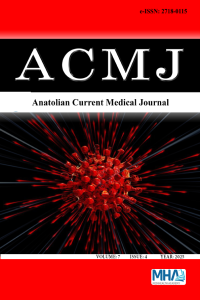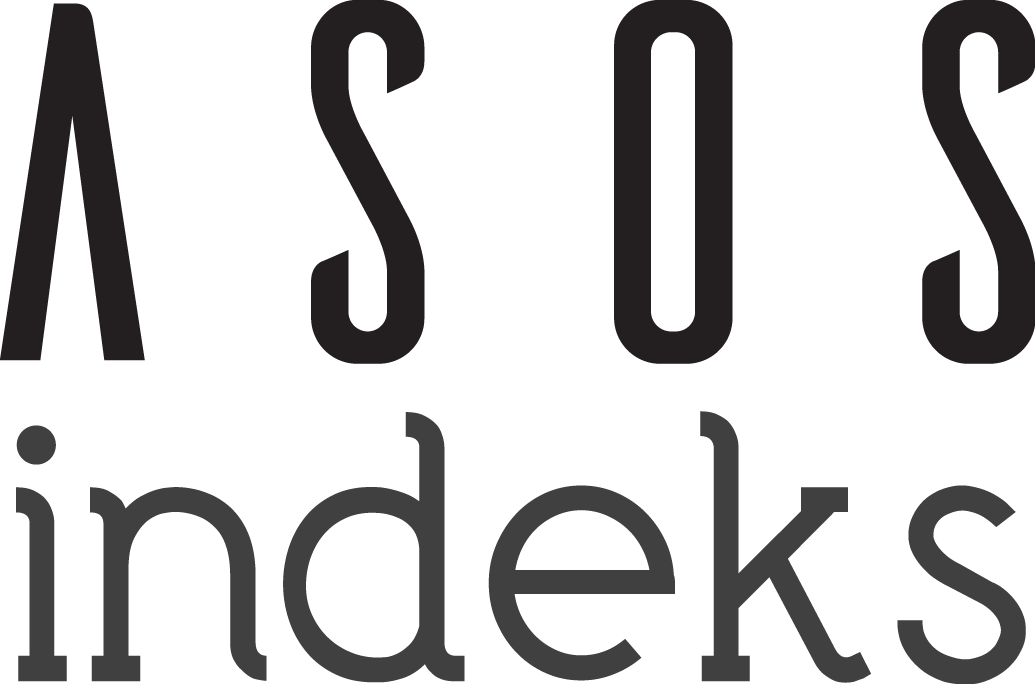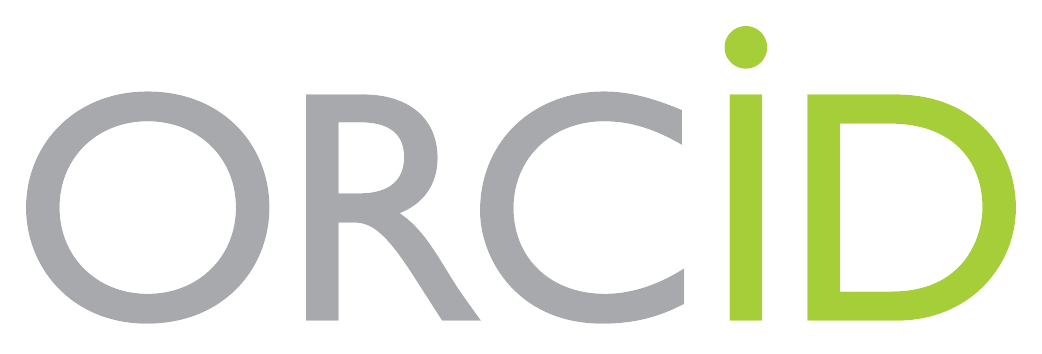Abstract
Aims: Upper gastrointestinal bleeding (UGIB) is gastrointestinal bleeding that occurs in the upper gastrointestinal tract and is usually defined as bleeding originating from the esophagus, stomach or duodenum. In this study, we aimed to analyse the demographic and clinical characteristics of UGIB patients.
Methods: This retrospective study included patients presenting with UGIB to our gastroenterology clinic between 2006 and 2012. Epidemiological characteristics, risk factors and the presence of Helicobacter pylori (H. pylori) were investigated.
Results: The study included 282 patients. 200 of the patients were male and the mean age was 56 years. 47.2% of the patients presented with melena. 63.9% of the patients had one or more systemic diseases. The highest frequency of bleeding presentations occurred in May and June. The most common cause of bleeding was duodenal ulcer in 38.6%. According to Forrest classification, 73.8% of the patients had Forrest 3 ulcer. H. pylori was positive in 66.2% of the patients. Esophageal varices and fundal varices were observed in 7.3% and 1.8% of the patients, respectively. 224 (79.4%) patients received blood replacement. There was a
significant difference between erythrocyte suspension replacement in patients with a history of acetylsalicylic acid use (p=0.03) and erythrocyte suspension (p=0.01) and fresh frozen plasma (p<0.001) replacement in patients with a history of warfarin use.
Conclusion: This study reveals that many variables such as age, comorbidity, medication use and H. pylori infection should be taken into consideration in the clinical management of UGIB.
References
- Saltzman JR. Chapter 30. Acute upper gastrointestinal bleeding. in CURRENT Diagnosis & Treatment: Gastroenterology, Hepatology, & Endoscopy, 2e (eds. Greenberger NJ, Blumberg RS, Burakoff R.) (The McGraw-Hill Companies, New York, NY, 2012).
- Kate V, Sureshkumar S, Gurushankari B, Kalayarasan R. Acute upper non-variceal and lower gastrointestinal bleeding. J Gastrointest Surg. 2022;26(4):932-949. doi:10.1007/s11605-022-05258-4
- Lenzen H, Musmann E, Kottas M, et al. Acute gastrointestinal bleeding cases presenting to the emergency department are associated with age, sex and seasonal and circadian factors. Eur J Gastroenterol Hepatol. 2017;29(1):78-83. doi:10.1097/MEG.0000000000000752
- Okutur SK, Alkım C, Bes C, et al. Akut üst gastrointestinal sistem kanamaları: 230 olgunun analizi. Akademik Gastroenteroloji Dergisi. 2007;6(1):30-36.
- Schuster DP, Rowley H, Feinstein S, McGue MK, Zuckerman GR. Prospective evaluation of the risk of upper gastrointestinal bleeding after admission to a medical intensive care unit. Am J Med. 1984;76(4):623-630. doi:10.1016/0002-9343(84)90286-9
- Yoon JY, Cha JM, Kim HI, Kwak MS. Seasonal variation of peptic ulcer disease, peptic ulcer bleeding, and acute pancreatitis: a nationwide population-based study using a common data model. Medicine (Baltimore). 2021;100(21):e25820. doi:10.1097/MD.0000000000025820
- Bhutia KD, Lamtha SC. Retrospective study of etiology of non variceal acute gastrointestinal bleeding in Eastern Himalayan region of India in Sikkim. J Family Med Prim Care. 2019;8(2):573-575. doi:10.4103/jfmpc.jfmpc_330_18
- Stanley AJ, Laine L. Management of acute upper gastrointestinal bleeding. BMJ. 2019;364:l536. doi:10.1136/bmj.l536
- Gralnek IM, Dumonceau JM, Kuipers EJ, et al. Diagnosis and management of nonvariceal upper gastrointestinal hemorrhage: European Society of Gastrointestinal Endoscopy (ESGE) Guideline. Endoscopy. 2015;47(10):a1-a46. doi:10.1055/s-0034-1393172
- Costable NJ, Greenwald DA. Upper gastrointestinal bleeding. Clin Geriatr Med. 2021;37(1):155-172. doi:10.1016/j.cger.2020.09.00111
- Wasserman RD, Abel W, Monkemuller K, Yeaton P, Kesar V, Kesar V. Non-variceal upper gastrointestinal bleeding and its endoscopic management. Turk J Gastroenterol. 2024;35(8):599-608. doi:10.5152/tjg. 2024.23507
- Alali AA, Barkun AN. An update on the management of non-variceal upper gastrointestinal bleeding. Gastroenterol Rep (Oxf). 2023;11: goad011. doi:10.1093/gastro/goad011
- Lee MW, Katz PO. Nonsteroidal antiinflammatory drugs, anticoagulation, and upper gastrointestinal bleeding. Clin Geriatr Med. 2021;37(1):31-42. doi:10.1016/j.cger.2020.08.004
- Durak MB, Şimşek C, Yüksel İ. Clinical outcomes of older patients with non-variceal upper gastrointestinal bleeding taking anti-thrombotic or non-steroidal anti-ınflammatory agents. Turk J Gastroenterol. 2023; 34(9):918-924. doi:10.5152/tjg.2023.23226
- Shiekh SA, Imran A, Kadla SA, et al. Seasonal variation in acute variceal upper gastrointestinal tract bleeding: experience of one decade from Northern India. Asian J Med Sci. 2021;12(8):76-80.
- Koliada A, Moseiko V, Romanenko M, et al. Seasonal variation in gut microbiota composition: cross-sectional evidence from Ukrainian population. BMC Microbiol. 2020;20(1):100. doi:10.1186/s12866-020-01786-8
Abstract
Aims: Upper gastrointestinal bleeding (UGIB) is gastrointestinal bleeding that occurs in the upper gastrointestinal tract and is usually defined as bleeding originating from the esophagus, stomach or duodenum. In this study, we aimed to analyse the demographic and clinical characteristics of UGIB patients.
Methods: This retrospective study included patients presenting with UGIB to our gastroenterology clinic between 2006 and 2012. Epidemiological characteristics, risk factors and the presence of Helicobacter pylori (H. pylori) were investigated.
Results: The study included 282 patients. 200 of the patients were male and the mean age was 56 years. 47.2% of the patients presented with melena. 63.9% of the patients had one or more systemic diseases. The highest frequency of bleeding presentations occurred in May and June. The most common cause of bleeding was duodenal ulcer in 38.6%. According to Forrest classification, 73.8% of the patients had Forrest 3 ulcer. H. pylori was positive in 66.2% of the patients. Esophageal varices and fundal varices were observed in 7.3% and 1.8% of the patients, respectively. 224 (79.4%) patients received blood replacement. There was a
significant difference between erythrocyte suspension replacement in patients with a history of acetylsalicylic acid use (p=0.03) and erythrocyte suspension (p=0.01) and fresh frozen plasma (p<0.001) replacement in patients with a history of warfarin use.
Conclusion: This study reveals that many variables such as age, comorbidity, medication use and H. pylori infection should be taken into consideration in the clinical management of UGIB.
References
- Saltzman JR. Chapter 30. Acute upper gastrointestinal bleeding. in CURRENT Diagnosis & Treatment: Gastroenterology, Hepatology, & Endoscopy, 2e (eds. Greenberger NJ, Blumberg RS, Burakoff R.) (The McGraw-Hill Companies, New York, NY, 2012).
- Kate V, Sureshkumar S, Gurushankari B, Kalayarasan R. Acute upper non-variceal and lower gastrointestinal bleeding. J Gastrointest Surg. 2022;26(4):932-949. doi:10.1007/s11605-022-05258-4
- Lenzen H, Musmann E, Kottas M, et al. Acute gastrointestinal bleeding cases presenting to the emergency department are associated with age, sex and seasonal and circadian factors. Eur J Gastroenterol Hepatol. 2017;29(1):78-83. doi:10.1097/MEG.0000000000000752
- Okutur SK, Alkım C, Bes C, et al. Akut üst gastrointestinal sistem kanamaları: 230 olgunun analizi. Akademik Gastroenteroloji Dergisi. 2007;6(1):30-36.
- Schuster DP, Rowley H, Feinstein S, McGue MK, Zuckerman GR. Prospective evaluation of the risk of upper gastrointestinal bleeding after admission to a medical intensive care unit. Am J Med. 1984;76(4):623-630. doi:10.1016/0002-9343(84)90286-9
- Yoon JY, Cha JM, Kim HI, Kwak MS. Seasonal variation of peptic ulcer disease, peptic ulcer bleeding, and acute pancreatitis: a nationwide population-based study using a common data model. Medicine (Baltimore). 2021;100(21):e25820. doi:10.1097/MD.0000000000025820
- Bhutia KD, Lamtha SC. Retrospective study of etiology of non variceal acute gastrointestinal bleeding in Eastern Himalayan region of India in Sikkim. J Family Med Prim Care. 2019;8(2):573-575. doi:10.4103/jfmpc.jfmpc_330_18
- Stanley AJ, Laine L. Management of acute upper gastrointestinal bleeding. BMJ. 2019;364:l536. doi:10.1136/bmj.l536
- Gralnek IM, Dumonceau JM, Kuipers EJ, et al. Diagnosis and management of nonvariceal upper gastrointestinal hemorrhage: European Society of Gastrointestinal Endoscopy (ESGE) Guideline. Endoscopy. 2015;47(10):a1-a46. doi:10.1055/s-0034-1393172
- Costable NJ, Greenwald DA. Upper gastrointestinal bleeding. Clin Geriatr Med. 2021;37(1):155-172. doi:10.1016/j.cger.2020.09.00111
- Wasserman RD, Abel W, Monkemuller K, Yeaton P, Kesar V, Kesar V. Non-variceal upper gastrointestinal bleeding and its endoscopic management. Turk J Gastroenterol. 2024;35(8):599-608. doi:10.5152/tjg. 2024.23507
- Alali AA, Barkun AN. An update on the management of non-variceal upper gastrointestinal bleeding. Gastroenterol Rep (Oxf). 2023;11: goad011. doi:10.1093/gastro/goad011
- Lee MW, Katz PO. Nonsteroidal antiinflammatory drugs, anticoagulation, and upper gastrointestinal bleeding. Clin Geriatr Med. 2021;37(1):31-42. doi:10.1016/j.cger.2020.08.004
- Durak MB, Şimşek C, Yüksel İ. Clinical outcomes of older patients with non-variceal upper gastrointestinal bleeding taking anti-thrombotic or non-steroidal anti-ınflammatory agents. Turk J Gastroenterol. 2023; 34(9):918-924. doi:10.5152/tjg.2023.23226
- Shiekh SA, Imran A, Kadla SA, et al. Seasonal variation in acute variceal upper gastrointestinal tract bleeding: experience of one decade from Northern India. Asian J Med Sci. 2021;12(8):76-80.
- Koliada A, Moseiko V, Romanenko M, et al. Seasonal variation in gut microbiota composition: cross-sectional evidence from Ukrainian population. BMC Microbiol. 2020;20(1):100. doi:10.1186/s12866-020-01786-8
Details
| Primary Language | English |
|---|---|
| Subjects | Gastroenterology and Hepatology |
| Journal Section | Research Articles |
| Authors | |
| Publication Date | July 28, 2025 |
| Submission Date | June 13, 2025 |
| Acceptance Date | July 21, 2025 |
| Published in Issue | Year 2025 Volume: 7 Issue: 4 |
TR DİZİN ULAKBİM and International Indexes (1b)
Interuniversity Board (UAK) Equivalency: Article published in Ulakbim TR Index journal [10 POINTS], and Article published in other (excuding 1a, b, c) international indexed journal (1d) [5 POINTS]
Note: Our journal is not WOS indexed and therefore is not classified as Q.
You can download Council of Higher Education (CoHG) [Yüksek Öğretim Kurumu (YÖK)] Criteria) decisions about predatory/questionable journals and the author's clarification text and journal charge policy from your browser. https://dergipark.org.tr/tr/journal/3449/file/4924/show
Journal Indexes and Platforms:
TR Dizin ULAKBİM, Google Scholar, Crossref, Worldcat (OCLC), DRJI, EuroPub, OpenAIRE, Turkiye Citation Index, Turk Medline, ROAD, ICI World of Journal's, Index Copernicus, ASOS Index, General Impact Factor, Scilit.The indexes of the journal's are;
The platforms of the journal's are;
|
The indexes/platforms of the journal are;
TR Dizin Ulakbim, Crossref (DOI), Google Scholar, EuroPub, Directory of Research Journal İndexing (DRJI), Worldcat (OCLC), OpenAIRE, ASOS Index, ROAD, Turkiye Citation Index, ICI World of Journal's, Index Copernicus, Turk Medline, General Impact Factor, Scilit
Journal articles are evaluated as "Double-Blind Peer Review"
All articles published in this journal are licensed under a Creative Commons Attribution 4.0 International License (CC BY 4.0)














